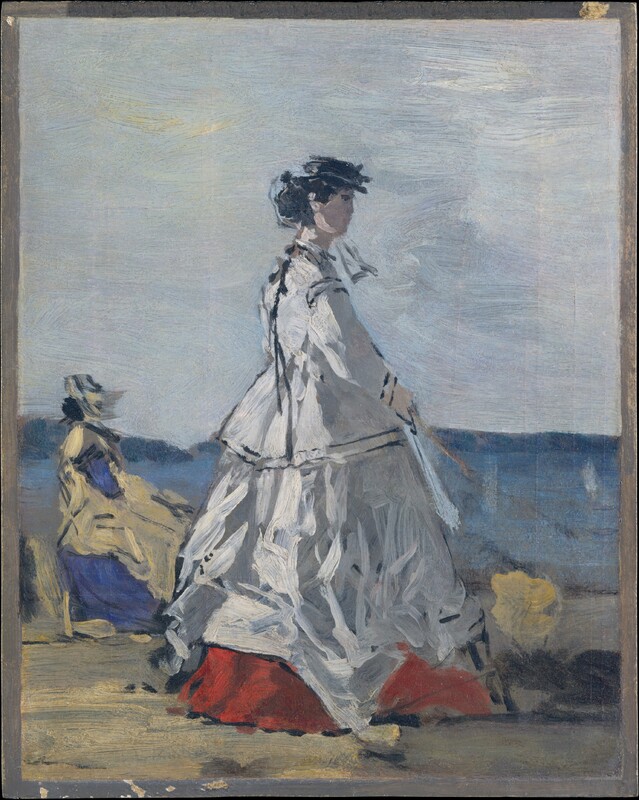Empress Eugénie
María Eugnenia Ignacia Agustina de Palafox y Kirkpatrick was born in Granada, Spain on May 5, 1826 and is now more commonly known as the famous Empress Eugénie who has been noted for majorly influencing French fashion and haute couture. Empress Eugénie married Prince Louis Napoléon in a religious ceremony on January 30, 1853 and in a civil ceremony on January 29th after they announced their engagement on January 22. During her marriage, Princess Eugénie quickly became one of the most well known fashion icons across Europe.
Empress Eugénie is also very often accredited with her contribution to French haute couture and luxury fashion, as well as being one of the most popular trend setters in the French royal court. Empress Eugénie had an extensive fashion collection and would very rarely be seen wearing an ensemble or dress more than once, in fact almost never. She had at least 12 ladies in waiting that helped her with her everyday needs, who also each had extensive outfits that they were required to wear. Empress Eugénie and her 12 ladies in waiting would always change outfits multiple times a day for different occasions, functions, and activities. Empress Eugénie would also periodically auction off some of her haute couture collection in an effort to raise money for charity and to help people that were in need.
Eventually, Empress Eugénie became intrigued when she saw her first Charles Frederick Worth gown in 1860, from there she ultimately became extremely obsessed with the dressmaker's designs. This was during the time that Charles Frederick Worth was partners with Otto Gustave Bobergh, at Worth and Bobergh. At a ball located at the Tuileries, the Princess Metternich, who was also an extremely influential Austrian socialite, was wearing a Worth and Bobergh gown designed by Charles Frederick Worth gown and caught the eye of Empress Eugénie. Before the ball had begun, the Princess was in Empress Eugénie’s private apartment and the Empress asked excitedly who designed such a beautiful gown. Empress Eugénie knew right away that whoever haute couture designer was responsible for such a stunning dress, she would love everything else they had created. After the Princess told Eugénie that it was a Worth and Bobergh gown designed by Charles Frederick Worth, Eugénie announced for Charles Frederick Worth of Worth and Bobergh to call for her the very next day. From that point on, Empress Eugénie almost exclusively wore the designs of Charles Frederick Worth.
Thanks to Empress Eugénie’s newfound obsession with the works of Charles Frederick Worth, his designs became much more valuable and sought after by both the upper classes of Europe and America. Before Empress Eugénie discovered her love for Maision Worth, a gown or dress would cost around 300-400 francs. By the time she was wearing, endorsing, and commissioning the designs, a gown or dress began to cost at least 2,000 francs.
One of the elements of Charles Frederick Worth’s designs that ultimately attracted Empress Eugénie had to do with his revolutionary designs, beautiful color use, and changes of popular silhouettes. In the middle of the nineteenth century, a wide skirt silhouette was the trend. However, Empress Eugénie and Charles Frederick Worth both did not care for crinolines, and found them difficult and uncomfortable. Charles Frederick Worth began to design gowns and dresses with a crinoline in the very back of the dress, which allowed the front of the dress to be sleeker and slimmer. The trend of the infamous crinoline in the back of the dress is known as the bustle, and it quickly became an extremely popular trend and a defining silhouette among other designers and women who loved to wear it.
Because of Charles Frederick Worth’s great success of designing for Empress Eugénie, he became the unofficial dressmaker of the royal court. Typically, a customer of Charles Frederick Worth would have visited his shop in order to have access to his designs and dresses, as well as to also be measured. However, when Worth worked with his royal clients, he came to them. There also was something to be said about the significance of the social outing of visiting the shop of Charles Frederick Worth. Between his beautiful shop and designs paired with his eccentric personality, everyone wanted to be seen at Maision Worth. However, Empress Eugénie was Charles Frederick Worth’s best and favorite client so he would always come to her private apartment for her fittings and to show her his newest designs.


